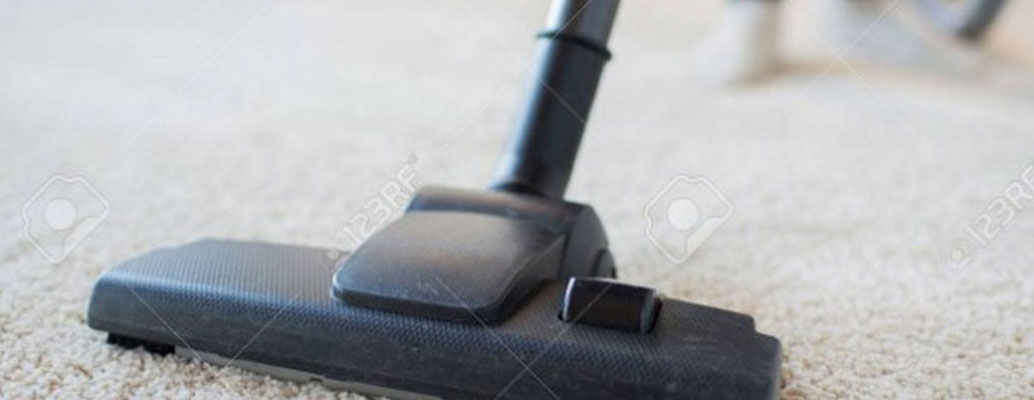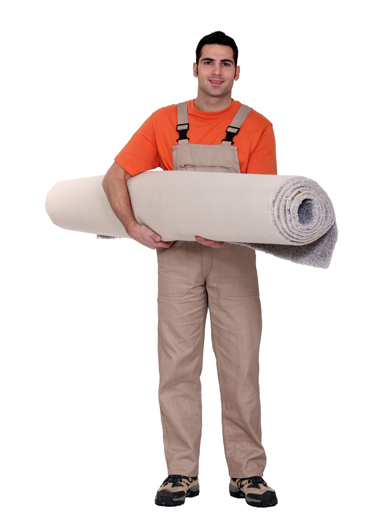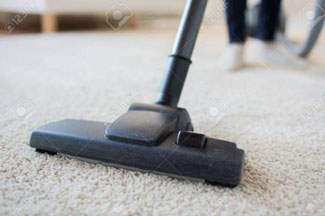Carpet Installation
WHAT TO KNOW BEFORE YOUR CARPET IS INSTALLED.
Being ready for the installation of your carpet will make the entire process go faster and more efficiently. Being knowledgeable and prepared for the big day when your new carpeting will transform your home will be a lot less stressful on you and your family.
Carpet installation is a skill that is developed through years of experience, so using professional installers is the smart choice. They will create a seaming diagram, or a “blueprint,” for the overall layout of the carpet, placement of seams, and transitions. This blueprint will assist them in the preparation and cutting of the carpet. Professionals excel at minimizing and hiding seams. They will ensure that seams are placed away from areas subjected to pivoting traffic and will not run seams perpendicular to doorway openings. Your professional installers will try to match the surface heights of various flooring products to minimize transitions.
BE PREPARED BEFORE INSTALLATION DAY.
We want you to be as well prepared as possible for the installation of your new carpet. Remove all furniture and other objects from the areas to be carpeted. Remove old floor covering at least one day prior to installation to allow for cleanup and floor preparation. If removing old carpet, leave tack strips in place and pull the staples out the floor from the original pad. In many cases, moldings and baseboards need to be removed for carpet installation.
Your existing subfloor may need to be prepared to receive the carpet or a new subfloor may be required. There is always the possibility that doors may not clear the new carpet and swing free. Some installers will remove doors in order to install the carpet and rehang them. You may need to arrange for a qualified carpenter to provide this service after the installation of your new carpet. Installing new carpet will produce waste. Usually, these materials are collected by your installer and left at your trash collection site.
INSTALLATION DAY REQUIRES YOUR PRESENCE.
Be prepared to be at home the day of your installation. Be available in case the installation crew has any questions. Your presence will ensure that the correct carpet is installed in the right areas. Because it is difficult to estimate the length and circumstance of each job, installers may not be able to give you the exact time of arrival. We suggest you be flexible and keep in touch with your retailer and installer. A variety of tools will be used for your install and the area can be hazardous. Be sure that your children and pets keep out of the work area on installation day. We recommend that you do a walk-through with the chief installer prior to the completion of the installation. This will give you the opportunity to ask questions and be clear about any final details.
WHAT TO DO AFTER INSTALLATION DAY.
Be sure to establish good ventilation after your install. Some of the chemicals used in the construction of carpet, as well as adhesives and seaming tapes, can have an odor for as long as 72 hours after installation. Shedding is a natural part of new carpet. Frequent vacuuming for the first few days should remove any loose fibers from the surface. Sprouting refers to small tufts of carpet that become visible after the installation. Use a small pair of scissors to carefully trim any tufts so they are flush with the surface of the carpet. If any wrinkles or ripples appear, it may be necessary to re-stretch the carpet. Please contact us to have this done professionally.
WHAT TO KNOW BEFORE YOUR CARPET IS INSTALLED.
Being ready for the installation of your carpet will make the entire process go faster and more efficiently. Being knowledgeable and prepared for the big day when your new carpeting will transform your home will be a lot less stressful on you and your family.
Carpet installation is a skill that is developed through years of experience, so using professional installers is the smart choice. They will create a seaming diagram, or a “blueprint,” for the overall layout of the carpet, placement of seams, and transitions. This blueprint will assist them in the preparation and cutting of the carpet. Professionals excel at minimizing and hiding seams. They will ensure that seams are placed away from areas subjected to pivoting traffic and will not run seams perpendicular to doorway openings. Your professional installers will try to match the surface heights of various flooring products to minimize transitions.
BE PREPARED BEFORE INSTALLATION DAY.
We want you to be as well prepared as possible for the installation of your new carpet. Remove all furniture and other objects from the areas to be carpeted. Remove old floor covering at least one day prior to installation to allow for cleanup and floor preparation. If removing old carpet, leave tack strips in place and pull the staples out the floor from the original pad. In many cases, moldings and baseboards need to be removed for carpet installation. Your existing subfloor may need to be prepared to receive the carpet or a new subfloor may be required. There is always the possibility that doors may not clear the new carpet and swing free. Some installers will remove doors in order to install the carpet and rehang them. You may need to arrange for a qualified carpenter to provide this service after the installation of your new carpet. Installing new carpet will produce waste. Usually, these materials are collected by your installer and left at your trash collection site.
INSTALLATION DAY REQUIRES YOUR PRESENCE.
Be prepared to be at home the day of your installation. Be available in case the installation crew has any questions. Your presence will ensure that the correct carpet is installed in the right areas. Because it is difficult to estimate the length and circumstance of each job, installers may not be able to give you the exact time of arrival. We suggest you be flexible and keep in touch with your retailer and installer. A variety of tools will be used for your install and the area can be hazardous. Be sure that your children and pets keep out of the work area on installation day. We recommend that you do a walk-through with the chief installer prior to the completion of the installation. This will give you the opportunity to ask questions and be clear about any final details.
WHAT TO DO AFTER INSTALLATION DAY.
Be sure to establish good ventilation after your install. Some of the chemicals used in the construction of carpet, as well as adhesives and seaming tapes, can have an odor for as long as 72 hours after installation. Shedding is a natural part of new carpet. Frequent vacuuming for the first few days should remove any loose fibers from the surface. Sprouting refers to small tufts of carpet that become visible after the installation. Use a small pair of scissors to carefully trim any tufts so they are flush with the surface of the carpet. If any wrinkles or ripples appear, it may be necessary to re-stretch the carpet. Please contact us to have this done professionally.
WHAT TO KNOW BEFORE YOUR CARPET IS INSTALLED.
Being ready for the installation of your carpet will make the entire process go faster and more efficiently. Being knowledgeable and prepared for the big day when your new carpeting will transform your home will be a lot less stressful on you and your family.

Carpet installation is a skill that is developed through years of experience, so using professional installers is the smart choice. They will create a seaming diagram, or a “blueprint,” for the overall layout of the carpet, placement of seams, and transitions. This blueprint will assist them in the preparation and cutting of the carpet. Professionals excel at minimizing and hiding seams. They will ensure that seams are placed away from areas subjected to pivoting traffic and will not run seams perpendicular to doorway openings. Your professional installers will try to match the surface heights of various flooring products to minimize transitions.
BE PREPARED BEFORE INSTALLATION DAY.

We want you to be as well prepared as possible for the installation of your new carpet. Remove all furniture and other objects from the areas to be carpeted. Remove old floor covering at least one day prior to installation to allow for cleanup and floor preparation. If removing old carpet, leave tack strips in place and pull the staples out the floor from the original pad. In many cases, moldings and baseboards need to be removed for carpet installation. Your existing subfloor may need to be prepared to receive the carpet or a new subfloor may be required. There is always the possibility that doors may not clear the new carpet and swing free. Some installers will remove doors in order to install the carpet and rehang them. You may need to arrange for a qualified carpenter to provide this service after the installation of your new carpet. Installing new carpet will produce waste. Usually, these materials are collected by your installer and left at your trash collection site.
INSTALLATION DAY REQUIRES YOUR PRESENCE.
Be prepared to be at home the day of your installation. Be available in case the installation crew has any questions. Your presence will ensure that the correct carpet is installed in the right areas. Because it is difficult to estimate the length and circumstance of each job, installers may not be able to give you the exact time of arrival. We suggest you be flexible and keep in touch with your retailer and installer. A variety of tools will be used for your install and the area can be hazardous. Be sure that your children and pets keep out of the work area on installation day. We recommend that you do a walk-through with the chief installer prior to the completion of the installation. This will give you the opportunity to ask questions and be clear about any final details.
WHAT TO DO AFTER INSTALLATION DAY.

Be sure to establish good ventilation after your install. Some of the chemicals used in the construction of carpet, as well as adhesives and seaming tapes, can have an odor for as long as 72 hours after installation. Shedding is a natural part of new carpet. Frequent vacuuming for the first few days should remove any loose fibers from the surface. Sprouting refers to small tufts of carpet that become visible after the installation. Use a small pair of scissors to carefully trim any tufts so they are flush with the surface of the carpet. If any wrinkles or ripples appear, it may be necessary to re-stretch the carpet. Please contact us to have this done professionally.




